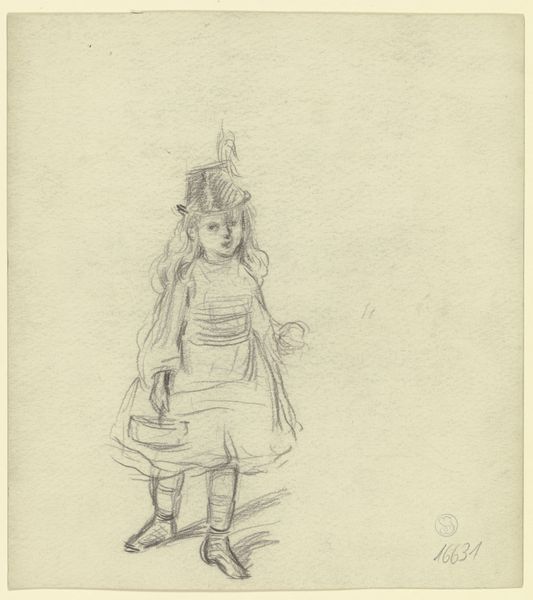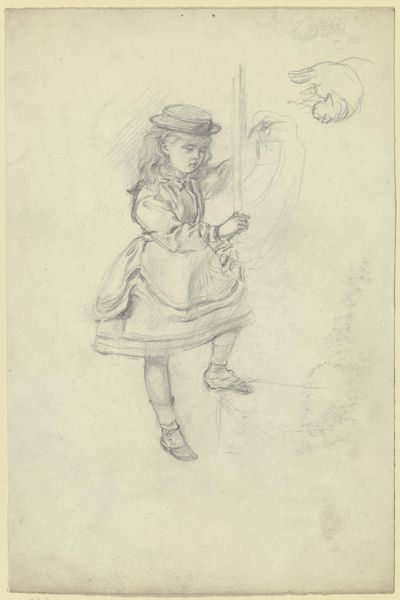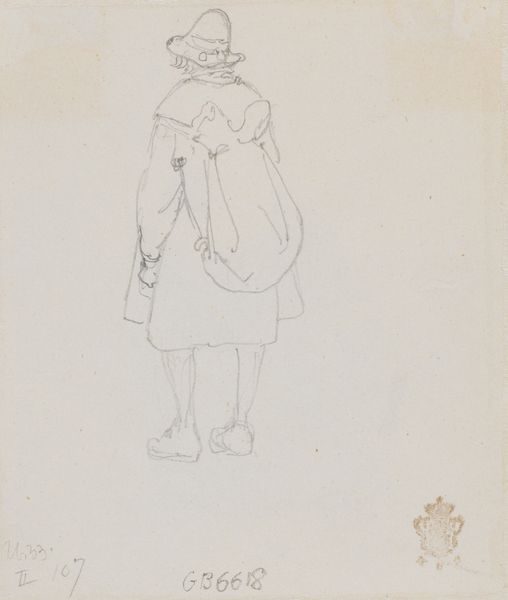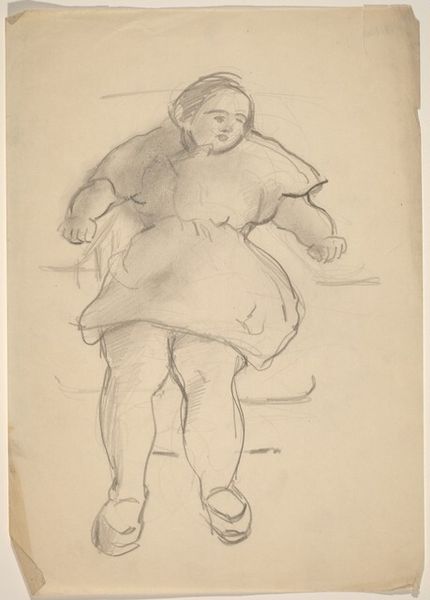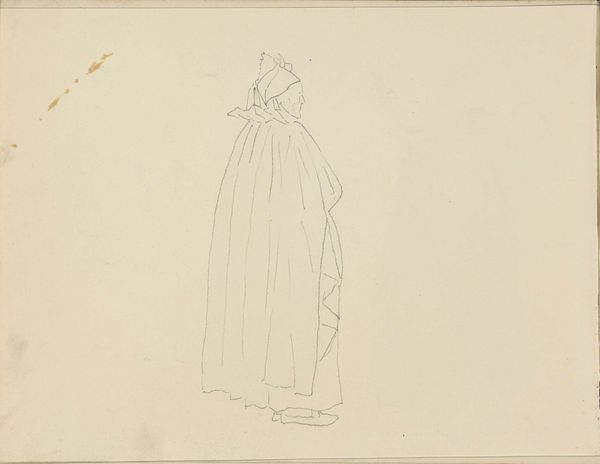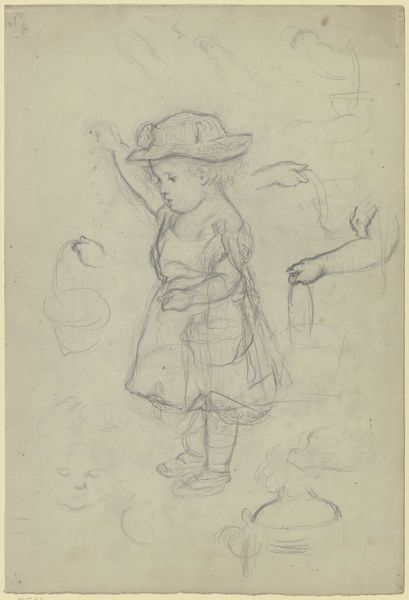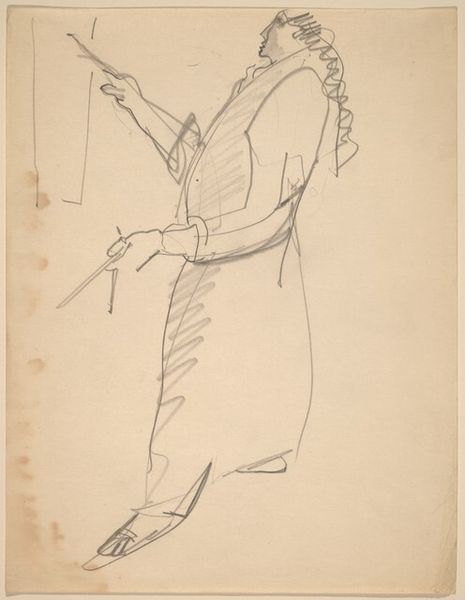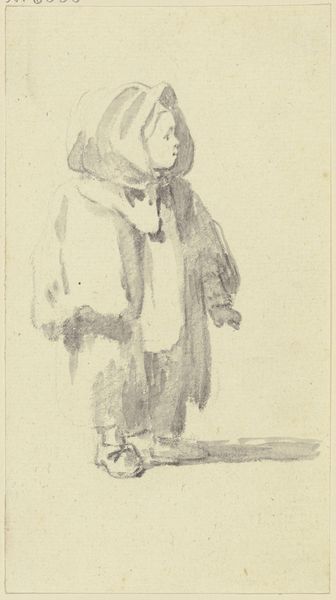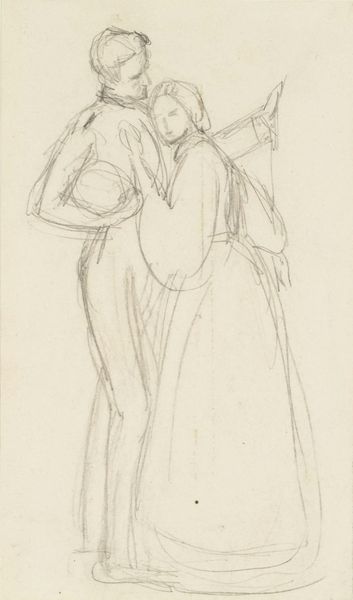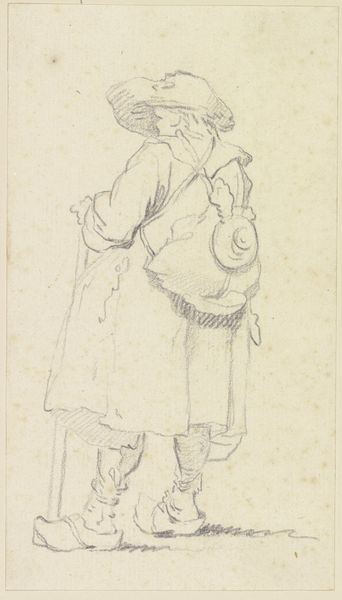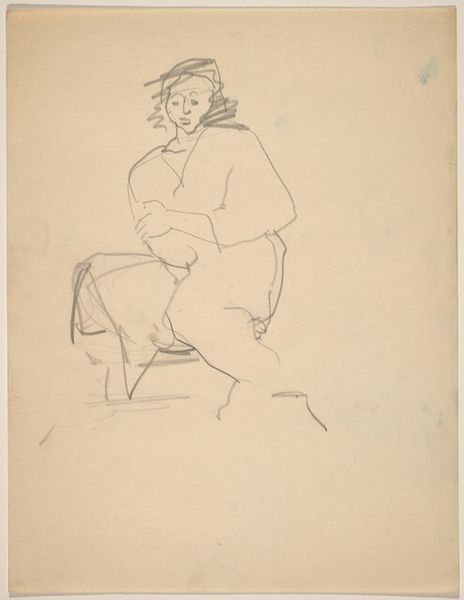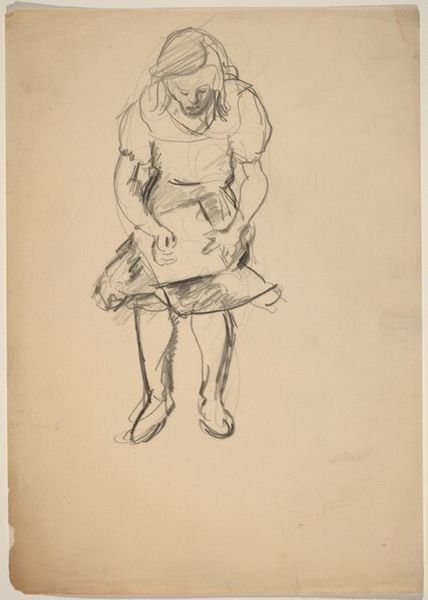
drawing, paper, pencil
#
17_20th-century
#
drawing
#
toned paper
#
light pencil work
#
quirky sketch
#
pencil sketch
#
paper
#
personal sketchbook
#
german
#
idea generation sketch
#
ink drawing experimentation
#
pen-ink sketch
#
pencil
#
sketchbook drawing
#
sketchbook art
#
realism
Copyright: Public Domain
Curator: This drawing, titled "Small child, trying to walk," is by the German artist Dora Hitz. We believe it comes from the late 19th or early 20th century and is rendered in pencil on paper. Editor: It's such a fleeting, gentle thing. The sketchiness gives it a sense of movement and vulnerability, almost like a half-remembered dream. The artist used very light pencil work, creating gentle contrasts on the toned paper. Curator: Precisely. If we situate this drawing within the historical context of the late 19th and early 20th centuries, it raises questions about the societal roles prescribed to women, particularly as mothers. How does the sketch capture not only a child’s first steps, but perhaps also the anxieties and aspirations tied to early childhood and gendered expectations? Editor: Looking at the composition, the pencil lines define a clear structure, creating a certain dynamic. Note how the visible hatching helps model depth and form. We can think about it in terms of structuralism, noting how each stroke contributes to the whole. What visual cues guide the viewer's attention, and how does the light pencil work affect our interpretation? Curator: What I find compelling is how the personal is embedded in the political. The act of sketching such a commonplace scene reflects the interior life of women. Perhaps motherhood was not celebrated openly at this time, and that this offers a glimpse into the more quiet, intimate moments and the female gaze. Editor: Yes, I find it noteworthy how the simplicity and formal structure allow Hitz to convey such tenderness. I'm captivated by its balance. Curator: Indeed. Through understanding its broader socio-historical meaning we find a mirror to our contemporary experiences of childhood. Editor: I agree. The drawing makes you contemplate how even through the most economical forms and modest tonal ranges, profound depths can be explored.
Comments
No comments
Be the first to comment and join the conversation on the ultimate creative platform.
